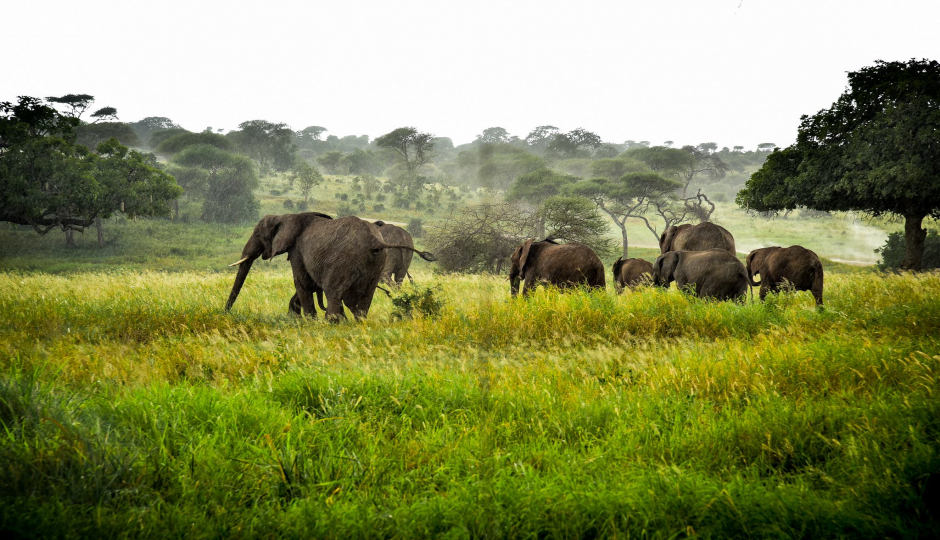
Ruaha National Park
Ruaha is rich with plants and animals including the Greater Kudu (not found in any other national park within Tanzania) and the park boasts a pristine and unexplored ecosystem, making safaris even more exhilarating.
Its Great Ruaha River (as well as the Mwagusi, Jongomero and Mzombe river) sustains wildlife around the year, especially during the dry season, when animals travel far distances to its banks in addition to a few natural springs. In the peak of the dry season, elephants obtain water from the dry sand river canals using their tusks and trunks and the waterfalls along the Great Ruaha River are an all important habitat for hippopotamus, fish and crocodiles.
The short rainfall season is from November to February, whilst the long season is between March and April. And the dry season is between June and October.
The park history dates back to 1910 and in 1974 a small section of South Eastern part of the Great Ruaha River was incorporated into the park. The name "Ruaha" originates from the Hehe tribe word "Ruvaha" meaning "river". Ruaha National Park is part of the Rungwa-Kizigo -Muhesi ecosystem, which covers more than 45000km2. In 2008 the Usangu Game Reserve and other important wetlands in Usangu basin have been annexed into the park, making it the largest park in Tanzania and East Africa .
Ruaha National Park has a high diversity of plants and animals including elephants, buffalos, antelopes and other plains game, in addition to the rare and endangered wild dog. The park serves as water shade both for wildlife and human beings, making it economically significant as it supports agricultural activities down stream and contributes to hydro- electric power (HEP) for the country up at the Mtera and Kidatu dams.
The park boasts more than 571 species of birds; some of which are migrants from within and outside Africa. The recently annexed wetland of the Usangu basin is one of the country's important bird areas (IBA) is recognized by Birdlife International. Though birds can be seen all the year around, the best time for bird watching is during the wet season.
Ruaha is believed to have one of the highest concentrations of elephants in any national park in East Africa. It is also a place where magnificent mammals, such as Kudu (both Greater and Lesser), Sable and Roan antelopes can easily be spotted in the Miombo woodland. Other animals in the park include lions, leopards, cheetah, giraffes, zebras, elands, impala, bat eared foxes and jackals. The Great Ruaha and Mzombe rivers are the most preferred habitat for crocodiles.
Ruaha has a wide range of physical features from the Great Rift Valley, extensive river systems, natural springs, wetlands, hot water springs, kopjes, rolling hills and mountains.
Best time to see predators and large mammals is during the dry season (mid May-December) when the grass is shorter, but be sure to go with one of our recommended guides. Lion's fur is easily camouflaged in dry grass, which is a similar shade!
The wet season (January –April) is best for bird watching, lush scenery and wildflowers. The male Greater kudu is most visible in June, which is their breeding season
About Ruaha National Park
Ruaha is part of the Rungwa-Kizigo –Muhesi ecosystem, which covers more than 45000km2. In 2008 the Usangu Game Reserve and other important wetlands in Usangu basin were annexed into the park, making it the largest park in Tanzania and East Africa with an area of about 20226km2.
How to get there
There are both scheduled and chartered flights into the park mainly from Arusha, Dodoma, Kigoma and Dar-es-salaam. The park's airstrips are located at Msembe and Jongomero.

